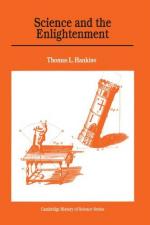
|
| Name: _________________________ | Period: ___________________ |
This quiz consists of 5 multiple choice and 5 short answer questions through Chapter 5, Natural History and Physiology.
Multiple Choice Questions
1. As a mathematician and rigorous metaphysician, ________ believed that the universe in all past, present, and future states followed a "preestablished harmony" laid down by God at the time of creation.
(a) Leibniz.
(b) Bourguet.
(c) Haller.
(d) Buffon.
2. Haller carried out his famous investigations into the sensibility and irritability of __________, according to Chapter 5.
(a) Animal tissue.
(b) Human tissue.
(c) Water.
(d) Plant tissue.
3. In Chapter 5, who analyzed the mechanics of the muscles and skeleton of the human body and tried to explain muscular contraction as a hydraulic or mechanical inflation of the tissue?
(a) Descartes.
(b) Borelli.
(c) Boyle.
(d) Grew.
4. In a letter of September 21, 1781, who wrote to his mentor Jean d'Alembert that he feared mathematics had reached its limit?
(a) Diderot.
(b) Joseph-Louis Lagrange.
(c) Sylvestre-Francois Lacroix.
(d) Bernard Fontenelle.
5. According to the narrator in Chapter 5, who coined the word "spermatozoon" in 1827?
(a) Hartsoeker.
(b) Swammerdam.
(c) Von Baer.
(d) Linnaeus.
Short Answer Questions
1. Vis viva was thought by its creator ________ to be the dynamic quantity that was conserved in the universe, according to the narrator in Chapter 2.
2. ________, working with the knowledge of latent heat, realized that a big difference in heat could be obtained with a small difference in temperature, if one compared water and ice.
3. Saussure found that plants grow better in an atmosphere rich in fixed air, up to a concentration of approximately ________ percent.
4. Who stated in 1665 that "Analysis...seems to belong no more to Mathematics than to Physics, Ethics or any other Science"?
5. In Chapter 5, the most scandalous physiology of all was "Man the Machine" of ________.
|
This section contains 258 words (approx. 1 page at 300 words per page) |

|




